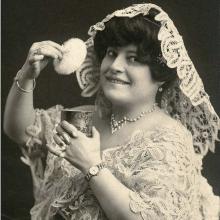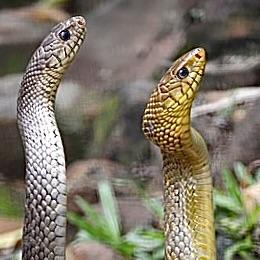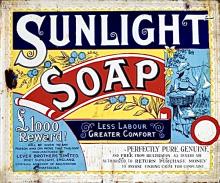
Fairyland, burlesque and a dead snake
Our account of Edinburgh's first purpose-built, permanent exhibition space on Annandale Street continues in early 1924.
On 2 January, a record crowd of 26,500 people attended the World's Fair and Carnival in the Industrial Hall (today's Lothian Buses depot) over the course of one day.
**********
The following account is from the Scotsman, 3 January 1924..
It attracted a large number of holiday-makers yesterday, and is deservedly one of the city’s most popular entertainments. Decorated for the occasion, the hall itself has an enchanting appearance, and, with gay crowds thronging its spacious floor, must have appealed to many a young fanciful imagination as a corner of fairyland.
In the numerous side shows one was able to see many remarkable sights, ranging from the fattest woman to the smallest matron. Other attractive stalls were so arranged so as to impress on one the simplicity of action embodied in the process of throwing large rings over clocks, dolls, boxes of chocolates, and other articles.
Included in the admission price of sixpence were stage performances by: Henri and Elaine, the royal entertainers; Three Ringlands, burlesque artistes; Manuel and Francois, the real eccentrics; Stylo and Sonny, super hoop jugglers; Elvena and Albert, battle axe manipulators; and the Lilliani Ladies, gymnastic acrobats.
On 8 January, the Scotsman reported:
There was evidence yesterday, when the Fair entered upon its last week, that its popularity is undiminished. Spiders and monkeys were racing as frequently as ever they had done during the holidays, while the laughter issuing from the joy-houses indicated that the wheel was performing its function as successfully as ever.

Towards the conclusion of the World’s Fair in mid-January, a celebratory event was held by the organisers (Edinburgh Evening News, 12 January 1924).
WORLD’S FAIR COURTESIES
The tenants of the World’s Fair and Carnival in the Industrial Hall held a supper and dance last night in Victoria Halls, Leith Street, where there was a company of about 300. On behalf of the tenants Mr T. Williamson, the manager of the Industrial Hall Company, was presented by Mr Sam Stott, president of the Showmen’s Guild, with a handsome travelling suit-case as a mark of appreciation and esteem.
On 17 January, the Scotsman reported an unusual occurrence.
SIX-FOOT SNAKE IN EDINBURGH.
THE ANIMAL IDENTIFIED.
The snake reported as having been found in M'Donald Road a few days ago has been identified in the Natural History Department of the Royal Scottish Museum as an Indian rat snake (Zamenis mucosus.) It is a well-grown specimen, some 6 feet 3 inches in length, in good condition, and showing no indications of rough usage, such as might have caused death. Although it was not alive when discovered, its fresh appearance suggests that it had only recently died.
The Indian rat snake is a common species in south-eastern Asia, in some parts of which it is actually protected on account of the useful service it renders man by destroying rats and mice. Indeed, in certain regions of India its destruction is visited upon the head of the destroyer by the imposition of a fine, so desirable is it considered to be to shelter it from the fate which visits thousands of snakes, harmful and harmless alike, in that country.
Although the Indian rat snake may be described as harmless in the sense that it possesses no poison glands, it is characteristic of it that it threatens and strikes violently at an aggressor. On this account, and because of its untameable disposition, it is seldom kept alive in private collections, although it is a familiar visitor to many Indian houses, which it enters in its search for food.
The possibilities regarding the strange occurrence of an individual in an Edinburgh street are either that it had belonged to a private collection in Edinburgh, or that it may have been transported to Leith docks in one of the experimental cargoes of Indian fruit which have recently been landed there. In either case, further information regarding the previous history of the specimen would be welcomed by the Keeper of the Natural History Department in the Royal Scottish Museum.*
Tho present specimen is in process of being preserved and prepared for mounting as an exhibit in the Museum, where it will appear in due course, but readers anxious to see examples of foreign snakes found in Edinburgh, may see several such specimens on view in the Reptile Hall of the Royal Scottish Museum. […]
A SHOW LADY'S PET.
The story of the snake which is the subject of the foregoing note is determined by a communication which we received last night from the manager for Mdlle. Lola, who appeared at the recent Industrial Hall Carnival.
The snake was one of a number of similar pets owned by Mdlle. Lola and figured in a tableau of Mdlle. Lola’s side show entitled “She.” It was, the manager states, a South American tree snake and harmless. Two other snakes which were used for other poses in the owner's performance were a diamond python and an Egyptian asp.
“The explanation of the creature’s escape,“ Mdlle. Lola’s manager writes, “is very simple. During the removal from the Industrial Hall, after the Carnival, the wire netting on the snake’s box probably got caught on a nail and torn, with the result that it got out and probably climbed a tree. The intense cold of the week would of course kill it, and it would drop to the ground, being found almost immediately by a passer-by.”

*In response to a Spurtle enquiry, Zena Timmons, Assistant Curator of Vertebrates at the National Museum of Scotland, confirmed on 30 August 2024 that the specimen had been 'mounted as display taxidermy' but was disposed of around 2008.
**********
Bostock’s Royal Italian Circus followed in late January for a fortnight, with a programme comprising 27 different turns of ‘immensely clever items and sketches and with 20 horses, elephants, ponies, monkeys &c., as performers, interspersed with comicalities by a host of clowns headed by “Spud.”'
The World's Fair and Bostock's Circus had both proved financial successes but also evidenced that in the straitened economic circumstances of the 1920s, more serious-minded commercial exhibitions could not be found to fill the Industrial Hall throughout the calendar.
It was an early indication of things to come …
[Image top-right: J. Willis Sayre Collection of Theatrical Photographs (SAYRE 10132). Image of Indian Rat Snake: Author, Augustus Binu, Wikipedia.]
The next article in this series will appear on 22 August. For previous coverage see:



